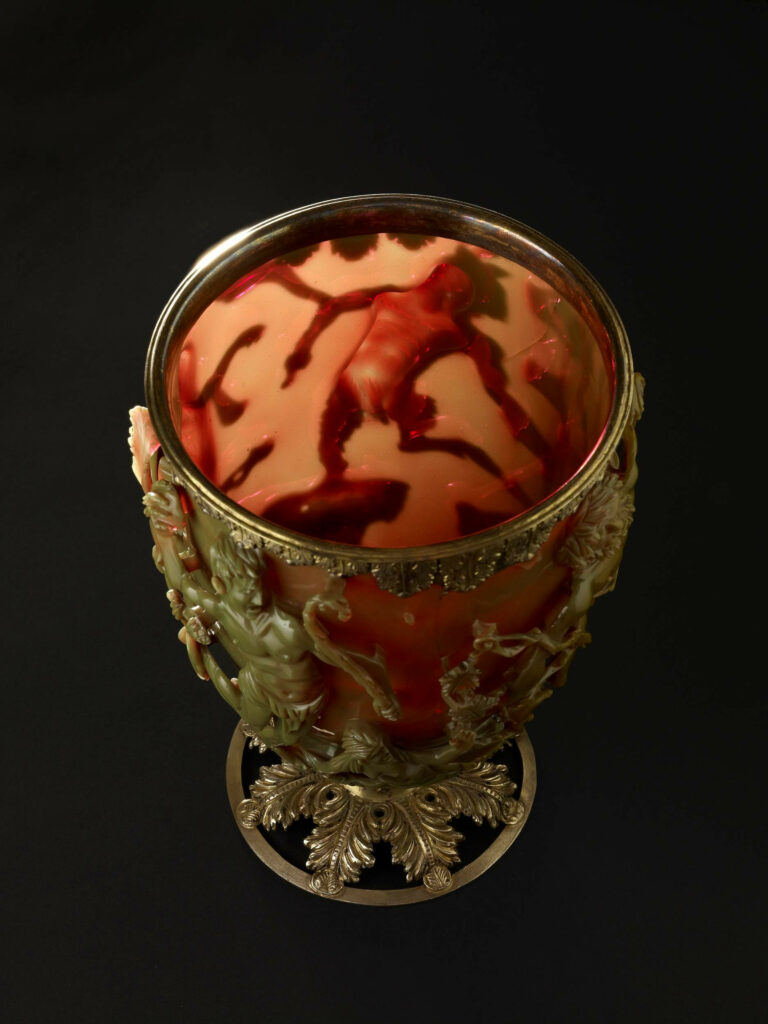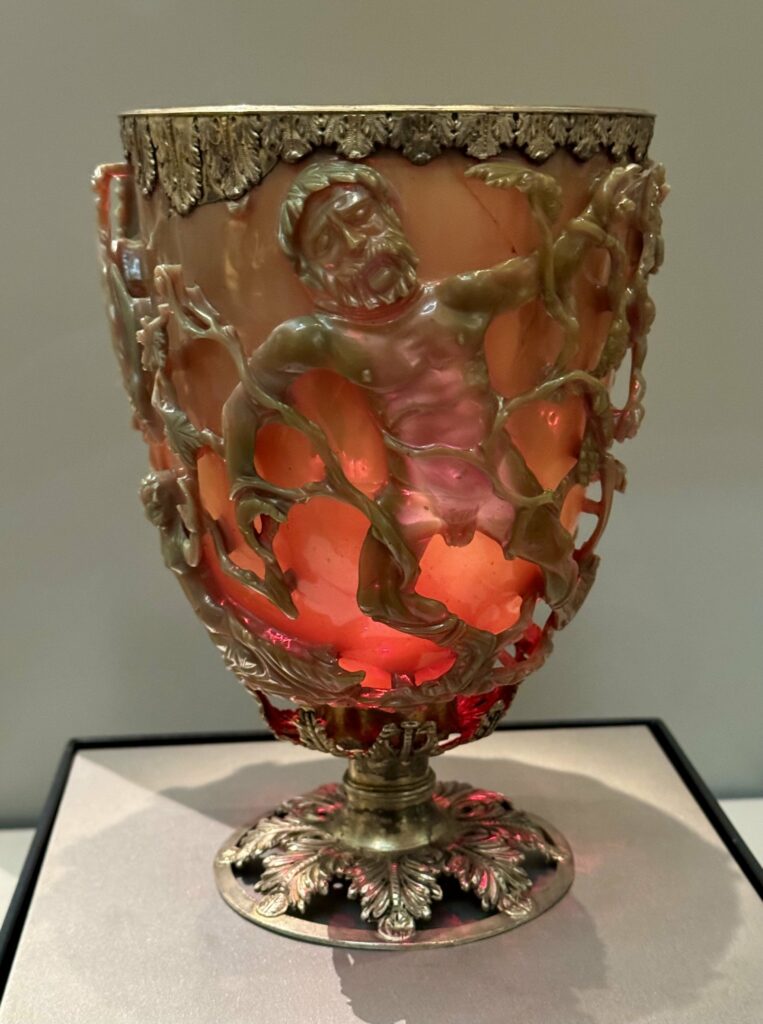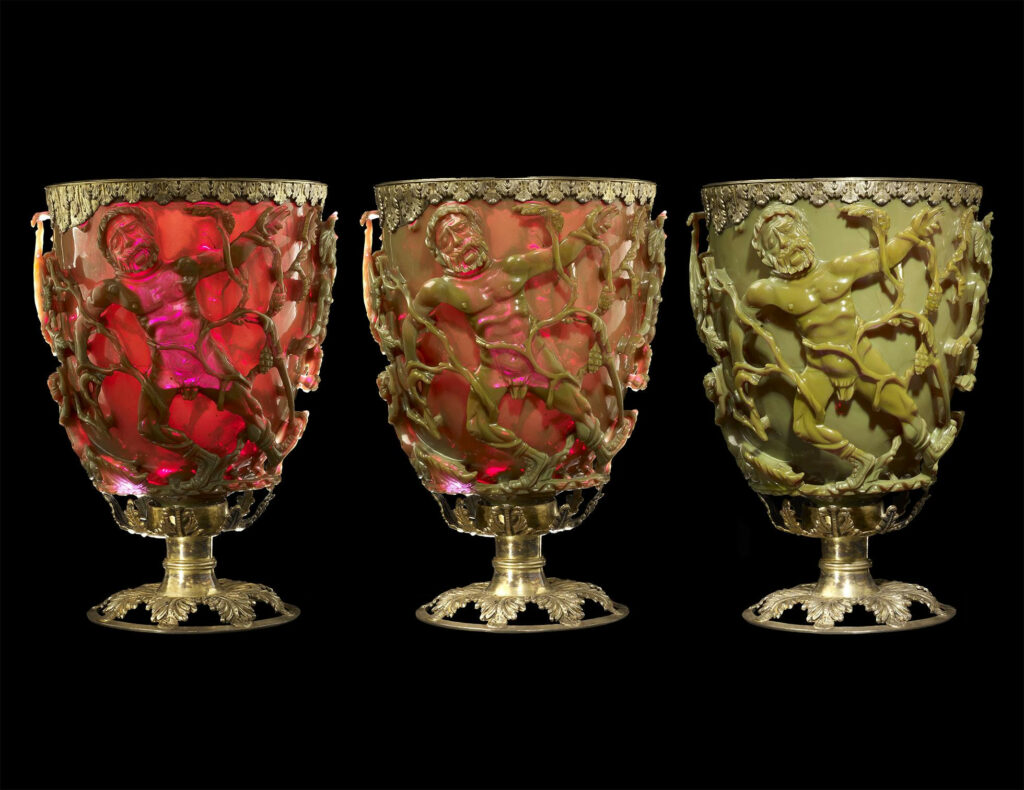A 1,600-Year-Old Marvel of Color-Changing Glass

In the halls of the British Museum sits an extraordinary artifact that continues to captivate both visitors and scientists alike. The Lycurgus Cup, a 4th-century Roman chalice, harbors a secret that has only recently been unlocked, revealing the astonishing technological prowess of our ancient ancestors.
The Mystery of the Color-Changing Chalice
At first glance, the Lycurgus Cup appears to be a jade green vessel adorned with intricate carvings depicting the mythical King Lycurgus of Thrace. However, this ancient cup holds a mesmerizing trick up its sleeve. When light shines through it from behind, the cup transforms, glowing a vibrant blood-red hue. This phenomenal color-changing property puzzled experts for decades after the cup’s acquisition by the British Museum in the 1950s.

Unraveling the Secrets of Roman Nanotechnology
It wasn’t until 1990 that researchers in England finally cracked the code of the Lycurgus Cup’s enigmatic properties. Their discovery was nothing short of revolutionary: the Roman artisans had embedded the glass with minute particles of gold and silver, each a mere 50 nanometers in diameter – smaller than one-thousandth the size of a grain of table salt.

This level of precision in manipulating materials at the nanoscale is a feat that even modern scientists find astounding. The vibration of these tiny metal particles when struck by light creates the cup’s famous color-changing effect, showcasing the Romans’ mastery of what we now call nanotechnology, millennia before the term was coined.
Ancient Wisdom, Modern Applications
Inspiring Cutting-Edge Sensor Technology

The implications of this ancient Roman technology extend far beyond the realm of historical curiosity. Modern scientists, inspired by the Lycurgus Cup, are developing ultra-sensitive sensors that could revolutionize various fields.
Engineer Gang Logan Liu and his team at the University of Illinois at Urbana-Champaign have created a prototype sensor based on the same principles as the ancient cup. Their device, which uses a plastic plate filled with gold or silver nanoparticles, is 100 times more sensitive to changes in salt levels than current commercial sensors.
This technology holds promise for detecting pathogens in bodily fluids or identifying dangerous liquids in airport security settings, demonstrating how ancient ingenuity can spark modern innovation.
Lessons from Roman Concrete

The Lycurgus Cup isn’t the only example of Roman technological superiority. Recent studies of Roman concrete, which has withstood the test of time under the Mediterranean Sea for two millennia, reveal that it surpasses modern concrete in both durability and environmental friendliness. This knowledge is now being applied to improve contemporary construction practices.
A Humbling Reminder of Ancient Genius
As we continue to uncover the secrets of Roman engineering and craftsmanship, the Lycurgus Cup stands as a humbling reminder of the incredible achievements of our ancestors. It challenges our perceptions of ancient civilizations and demonstrates that the solutions to modern challenges may sometimes lie hidden in the ingenuity of the past.

The story of the Lycurgus Cup serves as an inspiring testament to human creativity and innovation across the ages. It reminds us that by studying and understanding the technological marvels of antiquity, we may unlock new pathways to future breakthroughs.
